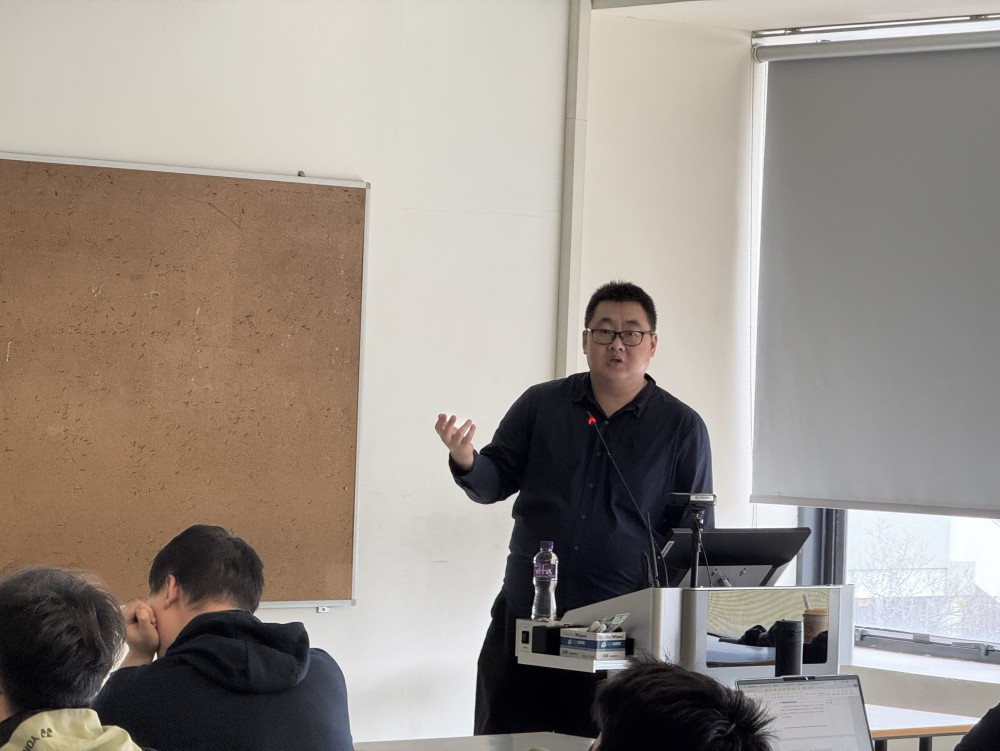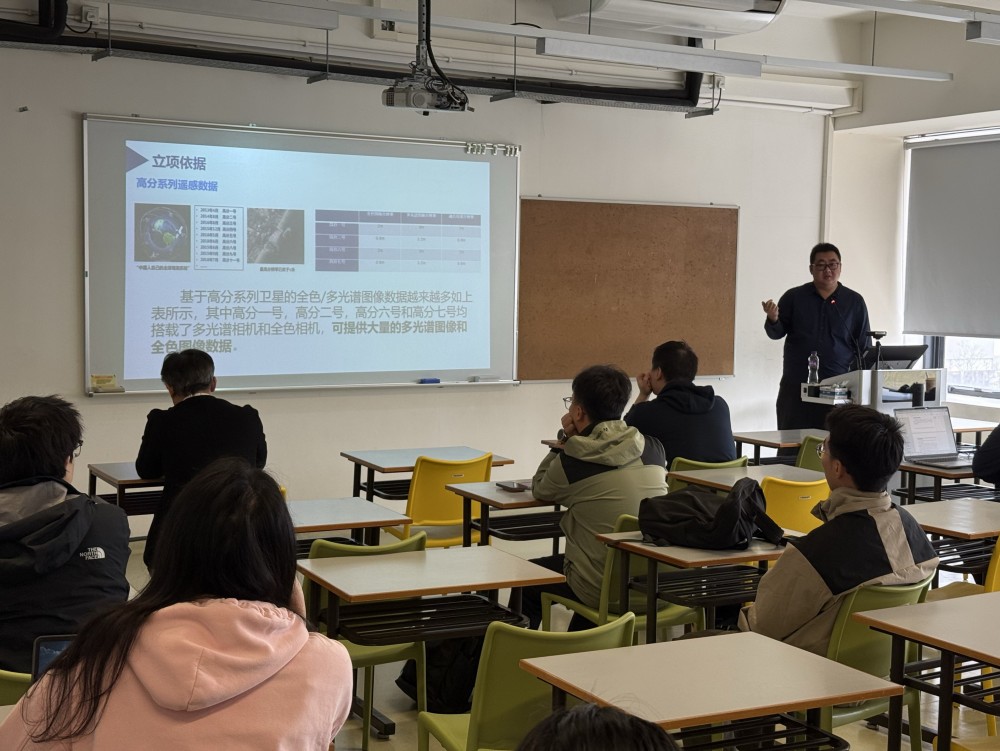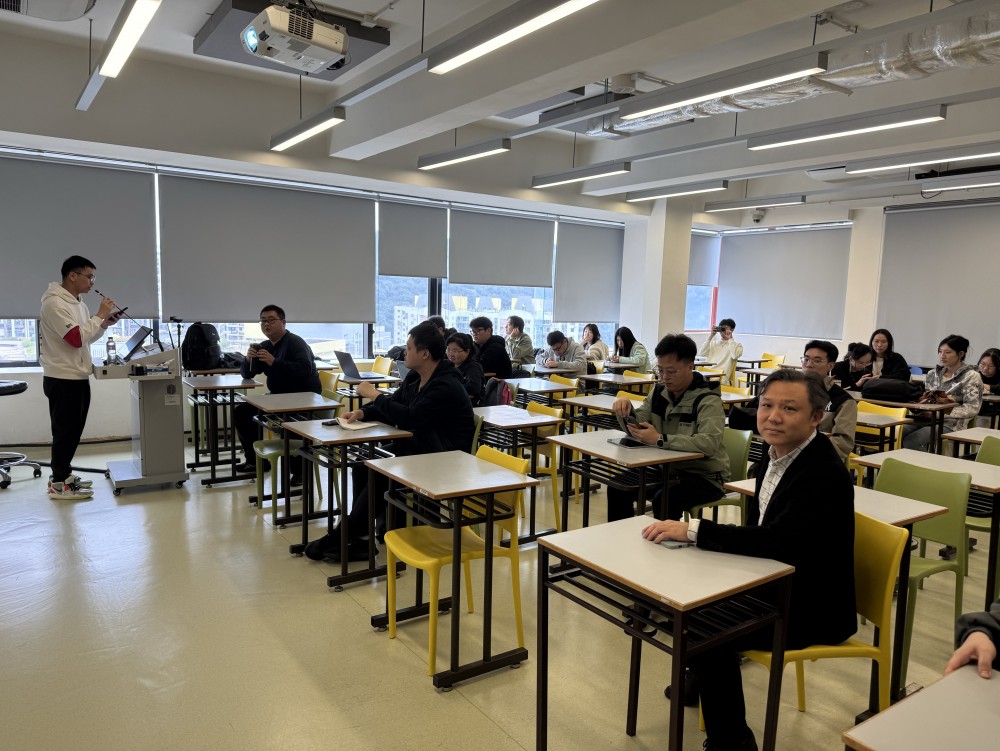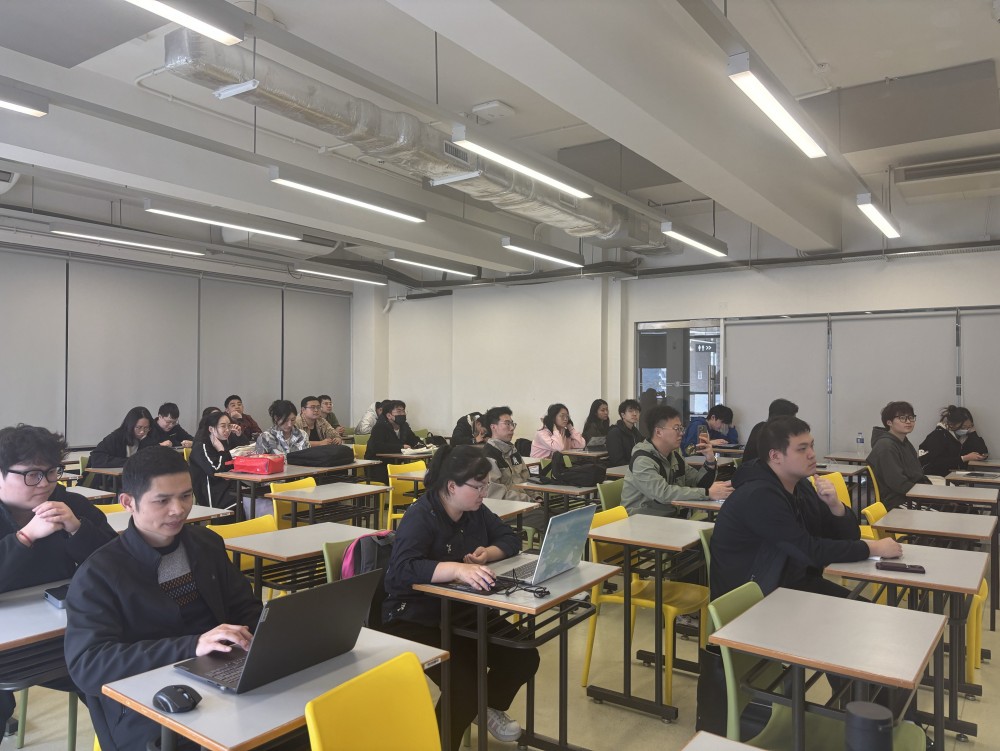At 3:30 pm on February 13, 2025, the Faculty of Data Science of City University of Macau held an academic special lecture entitled ‘Research on Multispectral Panchromatic Image Fusion and Algorithm Lightweight Deployment’ in S304. The guest speaker of this lecture was Associate Professor Peng Wang, a doctoral supervisor of the School of Electronic Information Engineering of Nanjing University of Aeronautics and Astronautics, a postdoctoral researcher of the Chinese University of Hong Kong, and a visiting associate professor at City University of Macau. The lecture attracted the enthusiastic participation of teachers and students, and the atmosphere on the scene was warm and academic.
Professor Wang has been selected into the ‘Hong Kong Scholar’ program of the Ministry of Human Resources and Social Security, the Jiangsu Youth Support Program, and the ‘Sky Scholar’ program of the Southern University of Aeronautics and Astronautics. He is currently an IEEE Senior Member and serves as the deputy editor-in-chief of ‘IEEE JSTARS’, the editorial board member of "Remote Sensing’, the young editorial board member of ‘Chinese Journal of Image and Graphics’, and many other important positions. In addition, he is also a senior member of the Chinese Society of Electronics, a member of the Remote Sensing Image Special Committee of the Chinese Society of Image and Graphics, a young member of the Special Committee of the Chinese Society of Space Science, and a National Natural Science Foundation of China correspondence review expert and a degree and postgraduate education review expert of the Ministry of Education. Professor Wang's research mainly focuses on the field of aerospace earth observation and remote sensing information processing and has achieved many breakthrough results in recent years. He has published more than 60 SCI papers, published 2 Chinese monographs, and obtained more than 10 patent authorizations. At the same time, he also undertook the research work of more than 20 important projects such as the National Natural Science Foundation, the Ministry of Science and Technology's key research and development, JKW, and manned space flight projects. These achievements have not only made great contributions to the academic community but also provided strong technical support for practical applications.
In the lecture, Professor Wang introduced the basic principles and application prospects of multispectral panchromatic sharpening technology in an in-depth and simple way. He pointed out that technology can fuse single-band panchromatic images (PAN) and multispectral images (MS) into a unique product, thereby generating images with high spatial and high spectral resolution. This technology plays an extremely important role in the current field of image fusion because it can integrate information from multiple information source images, improve the reliability of images, and obtain more accurate, comprehensive, high-quality images, thereby increasing the reliability of identifying research objects.
During the Q&A session, the teachers and students present raised their own questions and opinions on the content of the lecture and had in-depth exchanges and discussions with Professor Wang. Professor Wang patiently and carefully answered each question, and expressed his heartfelt gratitude to the teachers and students present for their enthusiastic participation and active questioning.This lecture not only provided teachers and students with valuable academic exchange opportunities, but also further deepened everyone's understanding of the research on multi-spectral panchromatic image fusion and lightweight deployment of algorithms. The teachers and students who attended the lecture said that they gained a lot of new inspiration and thinking through this lecture, and they look forward to more academic exchanges and cooperation opportunities in the future.







